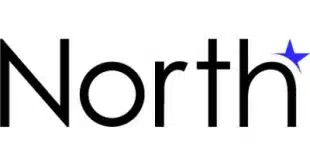![]()
Jon Purther, Director, Research, Payments Canada
 The Canadian payment landscape continues to transform rapidly, fueled by shifts in consumer and business needs and expectations and technology innovations. Looking ahead, it’s clear that continued innovation will further expand choice within the Canadian payment ecosystem.
The Canadian payment landscape continues to transform rapidly, fueled by shifts in consumer and business needs and expectations and technology innovations. Looking ahead, it’s clear that continued innovation will further expand choice within the Canadian payment ecosystem.
The payment preferences of Canadians
Canadians are comfortable using digital payments everyday. According to the latest Canadian Payment Methods and Trends report from Payments Canada, credit cards (34 per cent) continue to be the most frequently used payment method as measured by transaction volume, followed by debit cards (31 per cent). Cash usage over the last five years has declined 40 per cent overall[1].
Alternatively, online transfers are one of Canada’s fastest-growing payment types, with over 1 billion online transfers sent in 2023, up 14 per cent in volume from 2022. Online transfers include online e-wallet and electronic peer-to-peer (P2P) transactions initiated through online services that are prepaid or linked to deposit accounts at financial institutions. Interac e-Transfer is most often used for P2P payments, such as repaying someone (43 per cent) or sending a gift (36 per cent). Canadians are choosing online transfers for their continued speed, convenience and the ability to use owned funds rather than borrowing them.
Businesses are evolving their payment offerings
To keep pace with shifting consumer behaviours businesses are offering new payment options, with more bracing for the increased demand from consumers. Just under a quarter (24 per cent) of businesses that weren’t yet offering it as a payment option indicated they were interested in offering a BNPL service payment option in the next year. This is likely driven by the increased cost of living with many Canadians feeling the pressure of having less disposable income for whom BNPL can be an appealing low or no-interest payment option.
Similarly, 56 per cent of mobile wallet users frequently used their mobile wallets to pay for store purchases in 2023 and three-in-ten who made a store purchase using their mobile wallet were likely to do so again in the next twelve months. Businesses are embracing mobile wallet payments for their customers because they are secure for businesses (22 per cent), are more convenient (20 per cent), and increase customer satisfaction (20 per cent).
Payment trends and innovations to watch
As we look to the future, continued payment innovations and changing consumer expectations will no doubt evolve how businesses leverage payment options to best serve and engage their customers. Shifts in consumer-driven banking (also known as open banking), social commerce payments, QR code-enabled payments, biometric payments and artificial intelligence are just some of the payment trends we’re watching closely and anticipate will continue to reshape payments around the globe.
In Canada, we know that the number of digital payment methods available to consumers and businesses is growing and many Canadians are choosing different digital payment methods for various situations. We also know that the core of what is important for businesses and consumers when it comes to payments will transcend many decades to come – to ensure Canada’s economy is fueled through secure, efficient, convenient and smart payment options.
Jon Purther will be speaking at The SUMMIT on May 29, 2024, in Toronto, about Canada’s changing payment landscape. Register now to learn more about the trends, challenges and innovations shaping the payment behaviours of Canadians.
[1] Growth rate based on Average Annual Percentage Change (AAPC)





